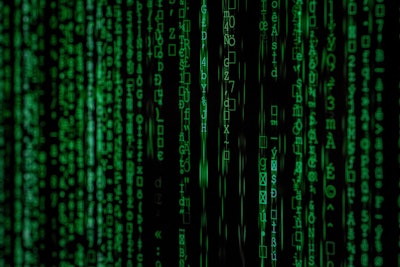
The Internet of Things is a transformative new layer of technology with the potential to solve many of the business world’s most pressing problems. But let’s be honest, it’s easy to get carried away when talking about it. That’s why it’s important to distinguish between what’s real and what’s hype.
One area where IoT is having a real impact now is the supply chain. There is great potential to improve performance and productivity across the entire supply chain. Already, IoT is starting to solve problems within the supply chain that were once considered intractable.
Among the perennial challenges in the global supply chain is knowing where products and materials are located at any given time, if in good condition and headed in the right direction. That’s the key question logisticians ask themselves every day in order to ensure they are going to have enough inventory in the right place at right time to meet demand.
Another longstanding problem is channel inventory accuracy. Have you ever called a store looking for a specific product? They check their system and tell you they’ve got one left. So you rush over only to discover that their system is out of sync and they actually don’t have your product in stock. Sound familiar? That kind of inventory inaccuracy can cause tremendous harm to a business, not just in lost revenue but customer satisfaction.
To solve these types of problems is worth billions of dollars to businesses and has been in the crosshairs of supply chain leaders, their consultants and technology providers for decades, but success has been limited. There have been a few important characteristics that limited this: First, they require information about a vast quantity of “things” (inventory, trucks or retail shelves) in your supply chain. Second, those things are often in motion and in the care of hundreds of others or channel partners. Getting to that information often proves a near impossible task. Third, you need that information to be both accurate and fairly real-time, or it is useless like in my example of the call you made to the retail store.
The supply chain connoisseur already sees where this is going. It is exactly those characteristics that make IoT so applicable. They now sense their own state and location and communicate constantly and bypass traditional systems along the way. The resulting information is free of human interpretation and therefore both accurate and current.
That’s the promise, and no wonder there is so much excitement about finally cracking those tough problems. Here are three ways in particular that IoT is working as a digital disruptor and transforming the supply chain for the better, from where demand meets supply all the way back in the supply chain to where goods are produced.
IoT is ushering in the retail store of the future
Retailers are starting to deploy IoT sensors to monitor what is on shelfs, where shoppers are spending time and when to restock inventory. Such devices eliminate “store walks” and hopefully the majority of empty shelves. Once in place, this technology goes further: gathering insights on the way that customers move around the store and where to place products to maximize sales. For instance, if a particular customer keeps returning to the same aisle and standing in front of the same product, IoT sensors can pick up on that and increase the chance of a sale by offering that customer a discount on the spot on the digital price tag. We’re just at the beginning now, but retailers will rely heavily on IoT to reinvent themselves and greatly enhance the customer experience.
IoT is reshaping distribution and logistics
The more sensitive and valuable your product is and the longer and complex your supply chain is, the more critical visibility becomes. Some companies are addressing this challenge by placing IoT sensors throughout their supply chains, on transport containers or pallets or even the product itself. IoT creates a high-definition real-time image of what the supply chain looks like at any given moment. The resulting value is immense: better fill rates with less inventory, higher asset utilization, and elimination of manual and much-hated workaround solutions from the pre-IoT era.
IoT is enabling intelligent manufacturing
Much excitement surrounds Industry 4.0 as it is fundamentally enabled by IoT sensors gathering real-time data generated by assembly line and production equipment. Armed with such insights in real-time, manufacturers can take preventive action before costly breaks-downs and production quality problems occur. Beyond preventive maintenance, the most innovative manufacturers are now using IoT and AI-enabled computer vision to establish a full “digital twin” of the manufacturing environment. This allows deep insights and better coordination of machines, labor, and materials resulting in considerable improvement of a plant’s productivity, the ultimate goal of every manufacturing executive.
At the very core lies a cost versus value tradeoff. We saw that the value potential can be large. But what about cost and complexity? Most obvious is the cost of the IoT hardware, sensors and beacons, readers, and, where they rely on cellular or satcom, airtime charges. While unit costs are coming down, if you’re deploying them by the thousands to tag all “things”, they do add up very quickly.
Companies have to ask themselves what is actually at stake and whether an IoT infrastructure really makes sense from a cost perspective. This balance is tilted further by additional layers of complexity, often overlooked at first. In the above example, how do you get your sensors to the place of manufacture? How do you get them back from your customers, if they are too valuable to destroy (which they likely are)? How do you train your manufacturing partners and logistics service providers how to affix and handle the devices, to check remaining battery life? How do new devices get provisioned and associated to specific shipment data? The truth is that IoT establishes a new and decentralized computing and communication infrastructure that comes with a whole new set of challenges. Data security and privacy. Trouble-shooting defective devices “out there.” Performing regular over-the-air updating of thousands of devices and other maintenance challenges.
If you’re considering IoT, you have to do your homework and decide if and what type of IoT system makes sense. Is the value there? Is it a flexible IoT toolkit requiring much work and maintenance from your IT team – or a very use-case specific whole-product solution outsourcing hardware, software, the AI analysis and infrastructure maintenance to a single specialist vendor? Can it only function and provide value once integrated into your backend systems? Or is there a gentler onramp and value curve as you learn to use and cherish IoT? That is the path to take.



















